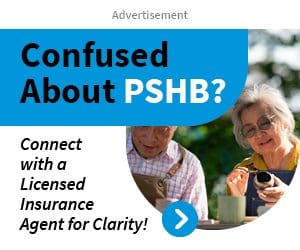Key Takeaways
- PSHB plans often have more hidden costs than initially expected, such as high copays and unexpected out-of-network charges.
- Understanding the balance between premiums and cost-sharing features can help you better predict the total cost of your healthcare.
The Real Price of PSHB Plans: Understanding Premiums, Copays, and Hidden Costs
Navigating through Postal Service Health Benefits (PSHB) plans can be a complex process, especially when you’re trying to understand the true costs involved. While premiums are often discussed as the main cost factor, copays, deductibles, and hidden expenses play a significant role in your total out-of-pocket spending. Knowing how these factors interact and how they can accumulate over time is essential to making informed decisions about your healthcare coverage.
The Role of Premiums in PSHB Plans
Premiums are often the first thing people consider when evaluating a health plan. These monthly payments ensure your continued coverage under a PSHB plan, and they’re typically easy to predict and budget for. However, focusing solely on premiums can be misleading because they don’t account for the other costs you might face when using healthcare services.
While lower premiums may seem like a more budget-friendly option, they often come with higher cost-sharing features like deductibles and copays. On the other hand, plans with higher premiums may reduce these other expenses. The key is finding a balance that fits your healthcare needs and financial situation.
How Copays Affect Your Healthcare Budget
Copays are fixed fees you pay for specific healthcare services, such as doctor visits, prescription medications, or specialist consultations. While copays might seem small in comparison to premiums, they can add up quickly, especially if you need frequent medical attention or expensive medications.
For example, a simple doctor’s visit might require a $30 copay, but if you see the doctor multiple times a month, those $30 payments can become a significant financial burden. It’s important to consider how often you’ll need medical care when evaluating a plan. Additionally, copays can vary depending on whether you’re seeing an in-network or out-of-network provider, potentially increasing your costs even more if you’re unaware of your plan’s network restrictions.
Copays vs. Coinsurance: What’s the Difference?
It’s crucial to distinguish between copays and coinsurance. While a copay is a fixed amount, coinsurance is a percentage of the service cost that you’re required to pay. If you have a plan that uses coinsurance, you might end up paying more out of pocket, particularly for more expensive treatments or procedures.
For instance, if your plan requires 20% coinsurance for a $1,000 medical procedure, you’ll pay $200. Understanding the difference between these terms and how they apply to your healthcare plan can significantly impact your total spending.
The Impact of Deductibles on Your Costs
A deductible is the amount you need to pay out-of-pocket before your insurance plan starts covering the majority of your healthcare expenses. Deductibles can vary widely between PSHB plans, and they are a crucial factor in determining the true cost of your plan.
Lower premium plans often come with higher deductibles. This means that while you might save on monthly payments, you’ll need to pay a significant amount upfront before receiving the full benefits of your coverage. If you’re generally healthy and don’t expect to need many healthcare services, a high-deductible plan might be a good choice. However, if you require regular medical care, a low-deductible plan might save you money in the long run.
Out-of-Pocket Maximums: A Safety Net?
Out-of-pocket maximums cap the total amount you’ll spend on healthcare in a given year. Once you’ve reached this limit through deductibles, copays, and coinsurance, your plan will cover 100% of your healthcare costs for the remainder of the year. This feature provides a safety net for those facing high medical expenses, but it’s essential to understand how it works within your plan.
The out-of-pocket maximum can vary significantly between PSHB plans, so it’s important to consider this feature when calculating your potential yearly costs. While a plan with a higher maximum might seem less expensive initially, it could lead to higher costs if you face a medical emergency or require expensive treatment.
Hidden Costs You Might Not Expect
One of the most overlooked aspects of PSHB plans is the hidden costs that can arise. These costs often stem from network restrictions, out-of-network care, and exclusions for specific treatments or medications. Even if you’re diligent about understanding your plan, it’s easy to overlook these unexpected expenses.
Out-of-Network Charges
Most PSHB plans offer better coverage for in-network providers. However, if you seek care from an out-of-network provider, you could face significantly higher costs, sometimes even without realizing it. This can happen if you’re in a hospital that’s in-network but are treated by an out-of-network specialist.
Prescription Drug Costs
Prescription medications can be a significant expense, particularly if your PSHB plan only covers generic medications or has a narrow formulary (the list of covered drugs). Some plans may require higher copays or coinsurance for brand-name drugs, while others may not cover them at all. Understanding your plan’s drug coverage is essential to avoid unexpected costs.
Emergency Care and Specialized Treatments
Another hidden cost can arise from emergency care and specialized treatments. Many people assume that emergencies are fully covered, but the reality is that out-of-network emergency care can still result in substantial bills. Specialized treatments like physical therapy or mental health services might also have higher copays or coinsurance, making them more expensive than anticipated.
Balancing Premiums and Out-of-Pocket Costs
Choosing the right PSHB plan requires a careful evaluation of how premiums, copays, deductibles, and hidden costs interact. It’s tempting to opt for a plan with the lowest premium, but doing so without considering other costs could lead to a financial strain when you need medical care.
When evaluating plans, consider your healthcare usage. If you’re generally healthy and don’t need frequent care, a high-deductible, low-premium plan might be cost-effective. However, if you have ongoing health concerns or require regular medications, a higher premium plan with lower out-of-pocket costs could save you money overall.
Practical Tips for Choosing a PSHB Plan
-
Evaluate Your Healthcare Needs: Before choosing a plan, assess how often you visit the doctor, need medications, or anticipate requiring specialized treatments. This will help you estimate your total yearly costs.
-
Check Provider Networks: Ensure that your preferred healthcare providers and specialists are in-network to avoid higher out-of-network fees.
-
Understand Drug Coverage: Review your plan’s formulary to see if your medications are covered and what your copay or coinsurance will be.
-
Factor in Emergency Care: Consider how your plan handles out-of-network emergency care, as this could be a significant expense in an unexpected situation.
-
Look at the Out-of-Pocket Maximum: A plan with a lower out-of-pocket maximum might offer better protection in case of a medical emergency or ongoing treatments.
Making the Best Decision for Your Needs
Ultimately, there’s no one-size-fits-all solution when it comes to PSHB plans. The best plan for you depends on your healthcare needs, financial situation, and risk tolerance. A high-premium, low-deductible plan might offer peace of mind and lower out-of-pocket costs for frequent care. Conversely, a low-premium, high-deductible plan might be more suitable if you rarely use healthcare services.
By thoroughly understanding the components of PSHB plans—premiums, copays, deductibles, and hidden costs—you can make a more informed decision that aligns with your financial and healthcare needs.
Understanding the Total Cost of Your PSHB Plan
While premiums often dominate the conversation around PSHB plans, they are only one part of the puzzle. Copays, deductibles, coinsurance, and out-of-network fees can all add up to significantly more than the initial premium cost. Taking the time to understand these costs and how they apply to your healthcare usage can help you avoid unexpected financial strain and choose a plan that offers the best balance of coverage and affordability.
Contact Information:
Email: [email protected]
Phone: 7025558901






